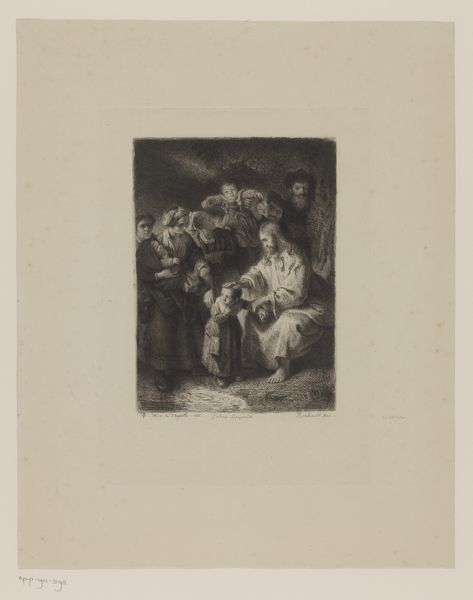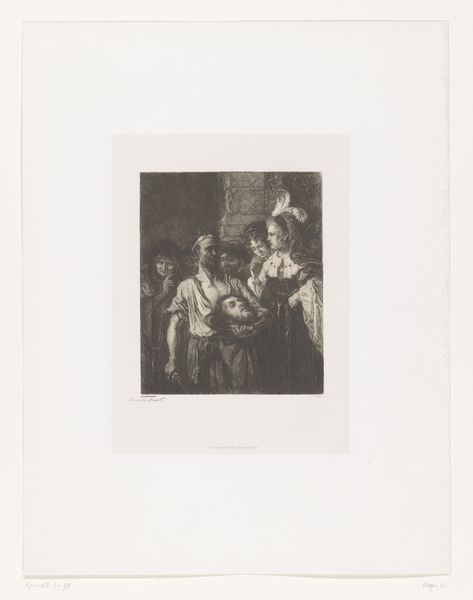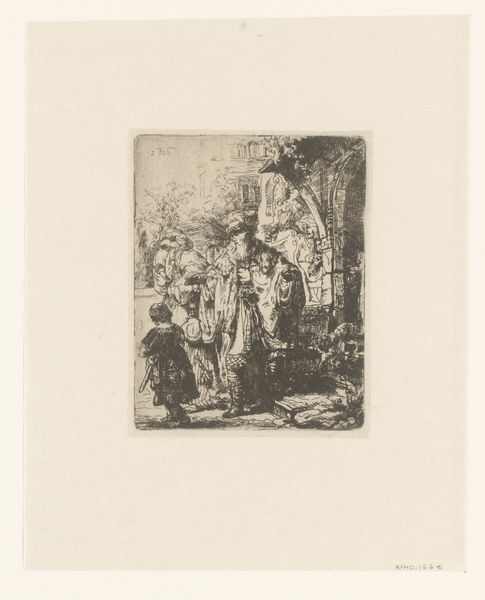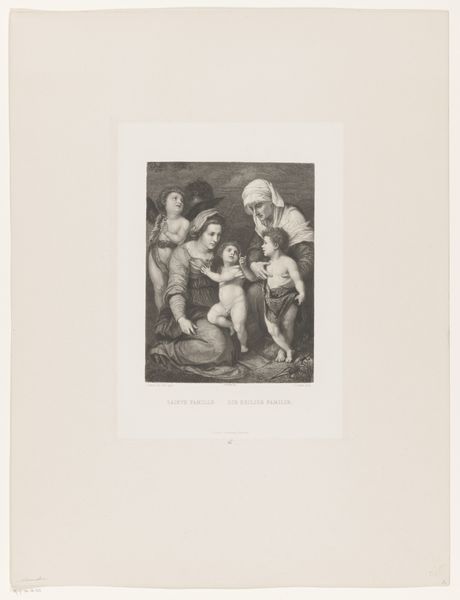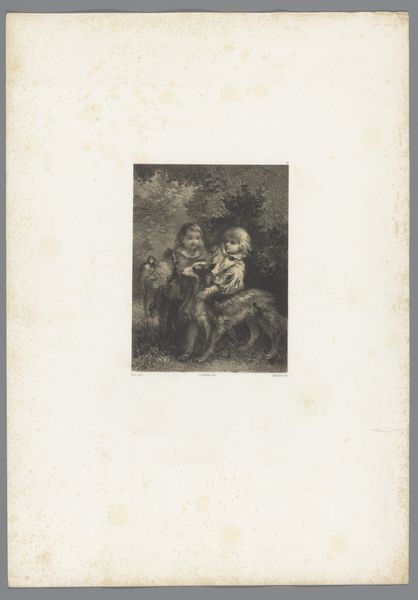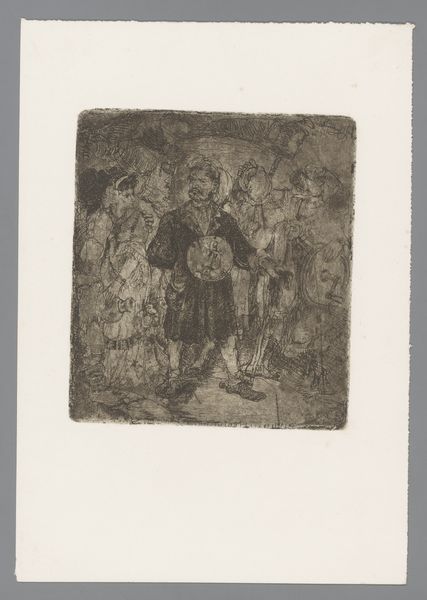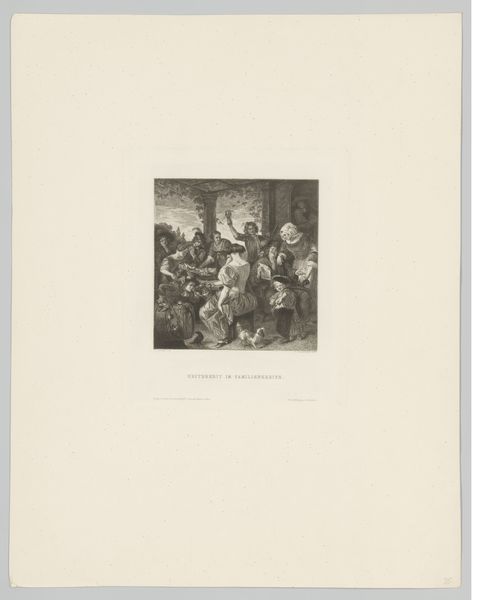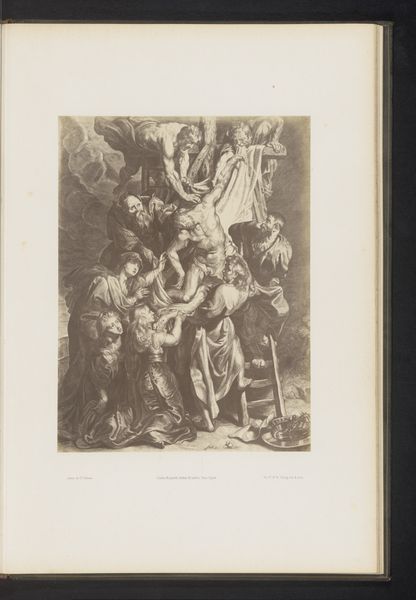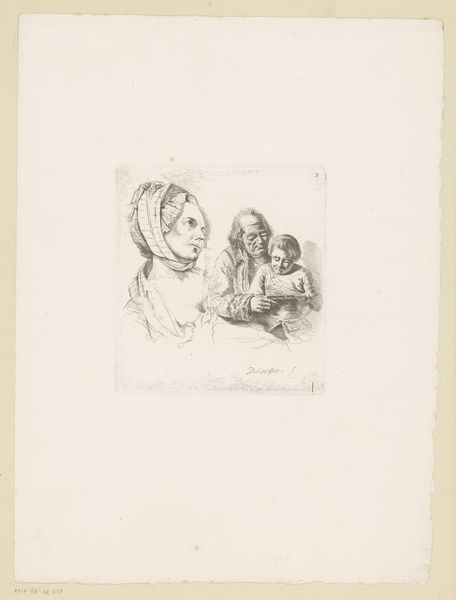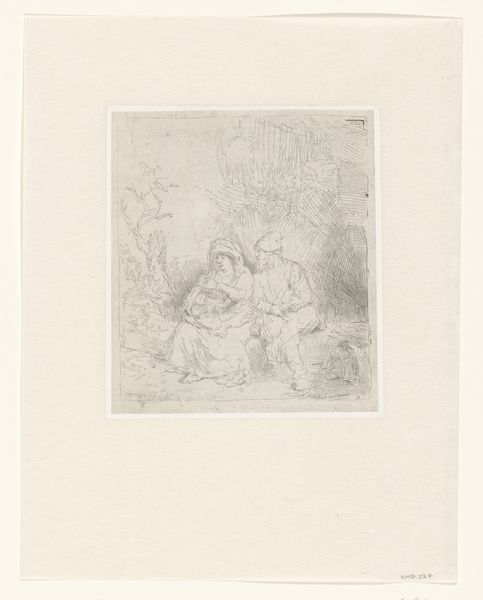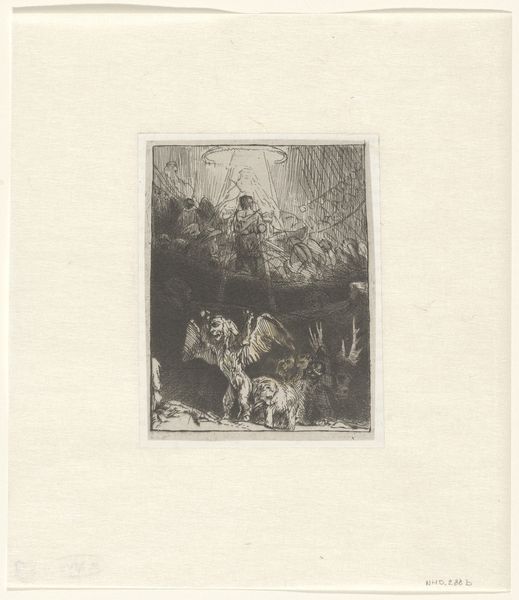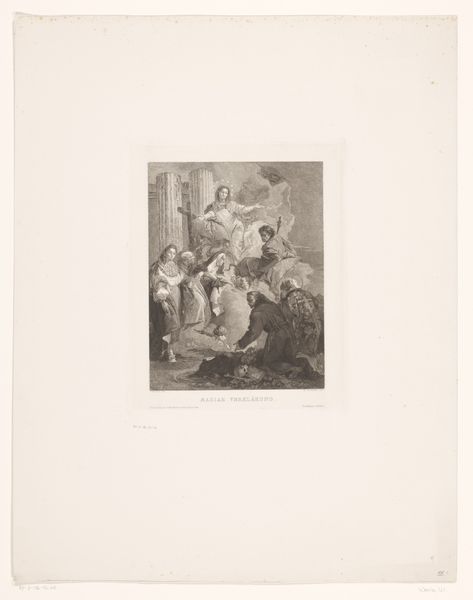
print, etching, engraving
#
portrait
# print
#
etching
#
group-portraits
#
history-painting
#
academic-art
#
engraving
#
monochrome
Dimensions: height 214 mm, width 182 mm
Copyright: Rijks Museum: Open Domain
Curator: We’re looking at an etching from 1871 by Jules Ferdinand Jacquemart titled "Heilige Familie." The monochromatic print depicts the Holy Family surrounded by onlookers. What are your first thoughts? Editor: My first impression is one of slightly unsettling intimacy. The crowd seems to almost press in, and while the figures are rendered with an academic grace, there's also a slightly claustrophobic quality to the scene. It feels almost like an invasion of privacy rather than a celebration of the divine. Curator: I see your point. The Holy Family, often presented in serene isolation, are placed within a public gaze. Note how Jacquemart employs engraving techniques to achieve nuanced shades of light and shadow. Symbolically, the use of light is particularly powerful. What might it evoke here? Editor: Given the era, and Jacquemart's skill, I believe the darkness carries weight. Academic art served to instruct, so this shadow perhaps intends to reflect an ambiguous social commentary rather than merely conveying spiritual awe. I'm interested in who the observers are, especially the two monks at the margin—are they there to legitimise what’s depicted, or observe with doubts? Curator: Absolutely. Observe the textures and details Jacquemart achieved. The folds of Mary’s robe, Joseph’s beard—they draw us into a very real, almost tactile world. This intimate portrayal pulls us away from a solely religious icon and anchors the Holy Family in the earthly. Even the seemingly minor detail of the wicker basket above creates a common visual for what the family needs rather than its special holiness. Editor: This makes me consider class dynamics, given the setting and composition. A traditional reading would praise its reverence. However, a feminist interpretation would note Mary as one node in a series of interpersonal gazes, her divinity a question debated through male approval. I’m drawn to understanding whose perspective this art served in 1871. Curator: A perspective well worth noting. The Holy Family represents hope, renewal, and an almost archetypal structure for societal bonds. It's a theme with immense symbolic power throughout art history. Editor: And in our contemporary moment, perhaps reassessing that archetypal structure is where true growth can begin. These re-interpretations can reveal so much about the prevailing expectations imposed on marginalised members of society, especially through familial roles. Curator: Indeed. Reflecting on this print, its shadows and highlights open into questions rather than dogmatic pronouncements. The work becomes a meditation on belief and its place within community, both for Jacquemart’s era and today. Editor: Ultimately, this piece serves as a space for examining social relationships, even if its setting appears safely distant and framed. And questioning those frameworks remains more essential than ever.
Comments
No comments
Be the first to comment and join the conversation on the ultimate creative platform.
